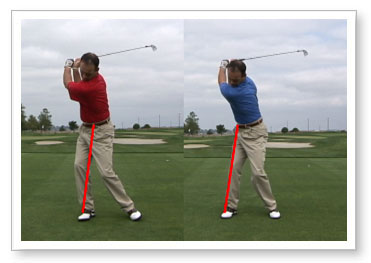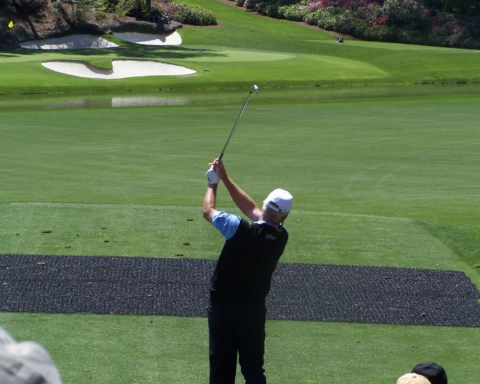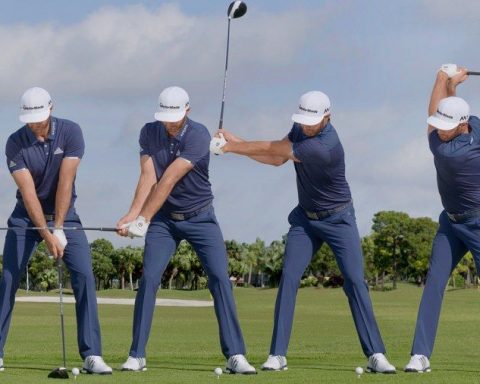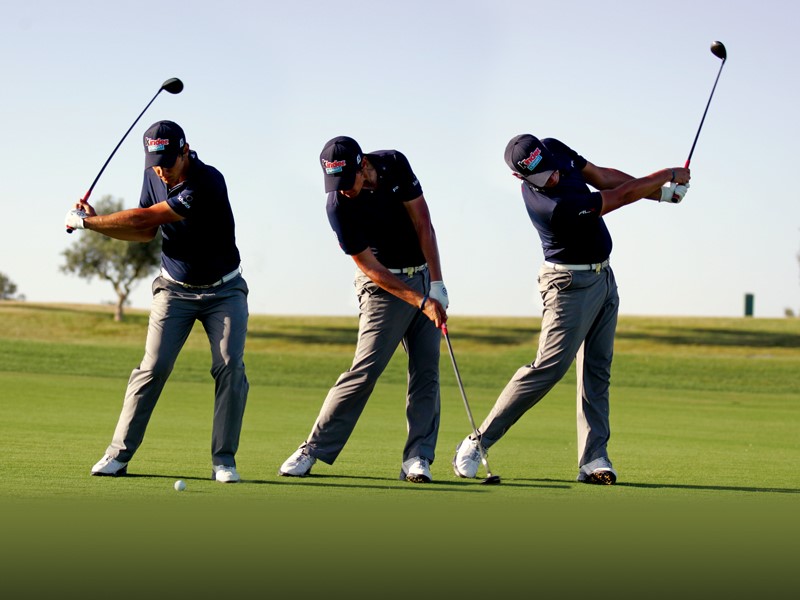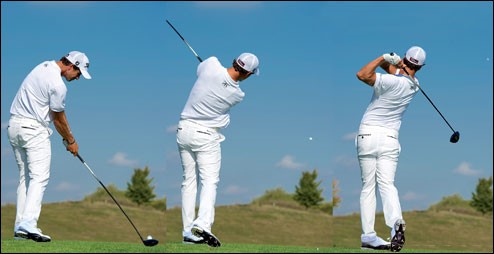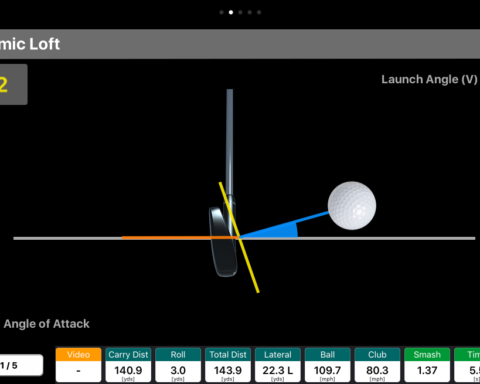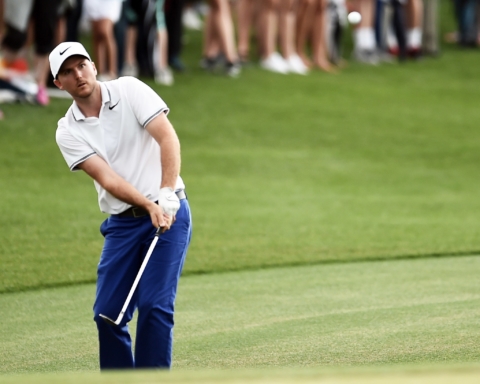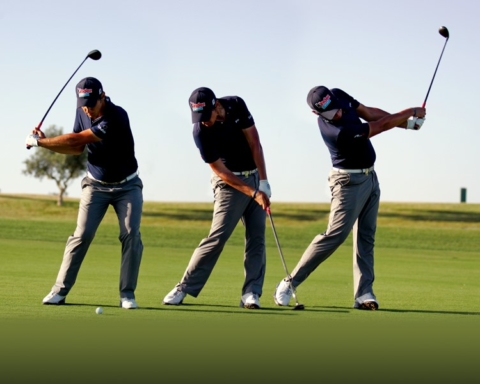
Pre-setting the back or right hip in the golf swing is not something I invented. If the concept was invented it has been studied most recently and explained in a scientific manner by rocket scientist Art Maffei.

Setting the right hit closed to the target or pointed right of the target before the beginning of the backswing was something I started doing by accident a couple of years ago. This simple easy adjustment really helped my ball striking. I tried this on the golf course for a couple of reasons;
- I have tight hips and have a hard time coordinating turning my hips during the backswing. Many times I would not turn my hips or I would sway my right hip over my right foot on the backswing. This caused many problems. By pre-setting my right hip I could just rotate and not “float” around on my back swing trying to find a post to rotate from.
- I am also generally not very flexible and have a hard time keeping my hands working on plane in the backswing. Like most players my hands start to work up towards my back shoulder on the back swing and when I start to loose flexibility my hands and arm then start working vertically. This obviously causes the swing plane to get steep and require an adjustment on the downswing. By pre-setting my right hip before the start of the backswing it made it much easier to keep my hands and arms working on plane.
Ben Hogan had great lower body motion, notice the right hip position
Getting the hands and arms working too vertical on the backswing is a very common problem for most players and for that reason alone most golfers should pre-set the right hip.

Having dinner with Tim Mitchel, Mickey Osugi and Dr. Sri Mummanani last week we were discussing the golf swing and Art Maffei’s teachings on “bumpy back” or pre-setting the right hip. One of the key take aways from the conversation was that Art had many scientific reasons why this was a proper move for golfers of all levels. One of the key scientific reasons for pre-setting the hip before the backswing is to keep the brain from fighting the swing verse balance. The brain is fighting the golf motion against the survival instinct to stay upright and not fall over and is more concerned about safety than golf. This may sound silly but it is very important. Many players have very poor balance and foot work trying to establish a pivot point by turning the hips in the takeaway and this removes this variable.
By setting the right hip you don’t need to find a pivot point or post to rotate from. You can then just turn against the pre-set hip in your back swing and eliminate many variables and athletic challenges.
This is a great way to play golf and you may want to read more about it and try it yourself?
Mickey explains the concept at http://www.golfwithmickey.com/bodigolf.html
Art and Billy demonstrate in this video
Art explains in a thread:
Thanks for starting this thread. I feel and hope many who visit here can add their experiences for the benefit of all of us. So it is with that spirit that I answer your questions AND REQUEST THAT THOSE CAPABLE OF ANY FUTURE TESTING ADD TO AND POST THE RESULTS OF THEIR EXPERIENCES.
It’s easy to address the second question first, and YES, the rear hip is ALWAYS the side that must be slightly closed to increase the lower body dynamic balance and stability ‘potential’ and to ‘pre-activate’ the subsequent back swing and down swing motions. As to your inference of ‘how much?’ this too is a personal and golfer unique characteristic.
FOR SURE, IT MUST be closed to some degree for everyone so (1) the swing has a consistent starting point, and (2) there is no ‘slack’ in the lower body to upper body interface. In science/engineering terms, this is usually called ‘dead band’ and you might recognize the feeling of uncertainty if in your car you had ‘slop’ in the steering mechanism.
As a suggestion, and using the “Awareness Instruction” methodology of learning described by Dr. Tim Gallwey in “The Inner Game of Golf”, try varying rear hip BB positions of say 1, 2-or 3 inches from ‘square’, and select the one that produces the best results for you after youe ‘awareness’ after the shot confirmed it was a 1, 2 or 3, as you desired..
As for the much more encompassing question and offer I made to discuss some options and consequences in terms of balance and sequencing, I will discuss examples of two of the most dramatic performance changes, and WHY they worked.
I will call these folks Golfer A, and Golfer B
Golfer A played in college, went on to get a Phd in Kinesiology, continues to play regularly, is a plus handicap golfer, and is a professor in a major university. For him, a 1-2 inch change in his BB starting position made significant improvements in his ball striking performance.
Unfortunately, neither force plates, nor a 3D, 6DOF system was available, but a Flightscope launch monitor recorded 5 Iron carry distance changes from 172 to 192 yards, and ‘dispersion’ decreases from 12 plus/minus 7 yards, to 6 plus/minus 4 yards after 10 shots with his normal swing, and 10 shots with the standard BBKIB instruction.
Golfer B, a mini tour player several decades ago, and now a professor/instructor at a Golf Academy had become VERY FULL FIGURED, and had added at least 50 pounds to his playing weight of 170-180 pounds, mostly up front. As you have probably guessed, he was still trying to swing the same way, and did not appreciate how much the additional weight AND GEOMETRY were affecting his ability to become and stay dynamically balanced. Simply he could not, and was on an endless journey trying to make the old swing work.
In this case, a Dynamic Balance System (DBS) was available, however not in a location where a launch monitor or 3D 6DOF system could also be used and synchronized with the force plates, a VERY DESIRABLE configuration for stability research. The DBS indicated a major movement in golfer B’s ‘center of pressure’ well out of the dynamic stability zone (base of support) suggested by the manufacturer (approximately the support area described by the outline of the feet with straight lines connecting the toes and the heels).
From the analytical work, this abnormal ‘center of pressure’ trace clearly indicated a major dynamic balance and stability problem, especially when time correlated with the upper and lower body positions during the downswing. So, the solution for this condition required a major BB set-up change, and make sure the upper body and ‘new’ 50 pound addition were at least ‘biased’ towards and hopefully INTO the ‘base of support’, BUT MUCH MORE IMPORTANTLY WOULD REMAIN WITHIN THE BASE OF SUPPORT UNTIL IMPACT.
For golfer B, BBKIB, then became, Bumpy Back Keep It (the right shoulder complex) Back. This change allowed the entire trail side to be delayed slightly, (probably also improving the kinematic sequencing) as the lead side rotated counter clockwise during the down swing and ‘pulled the trail side into the overall lower body rotation, FINALLY STAYING WITHIN THE ACCEPTABLE BASE OF SUPPORT.
In addition, if we were able to measure it, IMO, the instantaneous screw axis of rotation of golfer B’s lower body with the trail side delayed, would also have changed and help to FURTHER keep the ‘center of pressure’ within the base of support and attain our PRIMARY goal of significantly increased dynamic stability.
Several days later golfer B was able to do some testing on a Flightscope launch monitor and reported that with the new set-up, his initial tests on the driver and several other clubs indicated 5-10 percent increases in carry distance and 30-40 percent decreases in lateral miss distance and dispersion from the BB and right shoulder complex KIB.
So in conclusion, as I have noted in several other posts, Brian M, Jon Hardesty, Billie McKinney and Chris Como have had personal experience with BBKIB with and without launch monitors, including a few of their students too. I hope if they have found it a positive experience, BBKIB in various forms will find its way somehow into Project 1.68 TESTING with integrated systems (similar to those of Mike Jacobs) to help turn these dynamic stability ‘hypotheses into ‘golf truths’.
Sincerely,
art
Jim Hartnett, PGA
WWW.MYHOME4GOLF.COM


